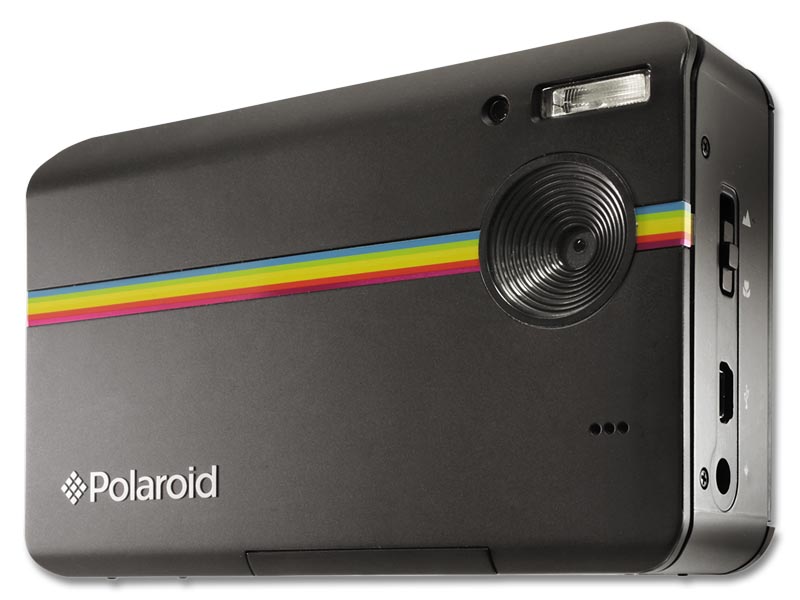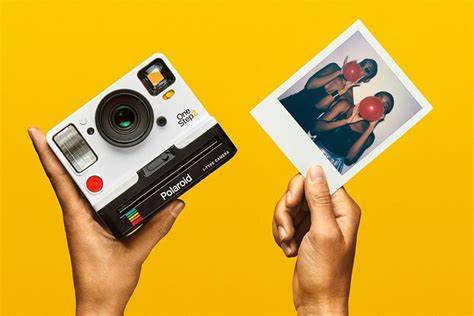A Polaroid camera is part of our general culture, both for those of us who are of a certain age, as well as for millennials , generations Z, and those who come. Because it is clear that instant cameras have managed to keep up and find a place in the homes of many of us.
And it is that Polaroid photos are, without a doubt, a memory for a lifetime, so I encourage you to continue in this article where we will talk about what Polaroid is, how a Polaroid camera works, what are its best cameras, pros and cons and a long etcetera .
Before we get into it, let me introduce you to this mega guide with all the information on photo developing, because if you're reading this, it's because paper photos really matter to you.
Now, let's get to the topic at hand. In this guide you will find:
WHAT IS POLAROID?
Polaroid is a company based in the US that is dedicated to manufacturing instant cameras and photographic paper of the same brand. His first instant photographs date back to 1947, where they achieved a development time of only 60 seconds and since then their applications have been multiple and varied (especially for the general public but it was also used in military photography, etc.) until 2008, in which the brand decided to close the factories that produced its reels.
WHAT HAPPENED TO POLAROID?
Luckily someone took care of picking up the glove and, under the name of The Impossible Project, bought the only factory still in operation to create these instant films.
Thanks to them, all of us who had a Polaroid were able to dust them off and use them again. I would even dare to say that people who had not heard of them, after the announcement of the closure, felt interest and wanted to try one ? .

HOW DOES POLAROID WORK? STEP BY STEP
The main attraction of a Polaroid camera is its ability to combine instantaneousness with analog hardware.
If you are a reel user or have been, you know how tedious the entire process to get a paper copy can be.
The grace of the Polaroids is mainly in their reels, which are both reel and paper; that is, in the same positive support and reveals.
What what?
Well, when you buy a Polaroid film and put it in your instant camera, you are in front of, neither more nor less than, a small portable laboratory.
It is the same reel that has all the necessary chemicals to develop and fix the image that are activated the moment you press the button and the camera ejects it from the slot.
- Step 1: The photosensitive paper is exposed to light by pressing the shutter and captures the image.
- Step 2: The camera ejects the paper from the front opening.
- Step 3: Before leaving, it goes through some rollers that spread the chemicals (located in the wide part of the characteristic white margin) on the photosensitive paper.
- Step 4 : You already have your photo on paper just a few seconds after pressing the shutter. Not bad for almost 70-year-old technology, right?
IDEAL USER TYPE OF A POLAROID CAMERA
If you are the king of technology, quality and minimalism, if you don't like accumulating things, or hanging photos on the walls or in photo albums, this camera is surely not for you ?.
If, on the other hand, you love photos with a vintage aroma, keeping memories, wallpapering walls; if you are into books in physical format and pass from the Kindle; If you value the uniqueness that an unrepeatable moment provides you, a unique image that you will not be able to reproduce..., you will love these types of cameras!
Those old tones in the color of the photo, that characteristic frame, that unique moment in which you press the shutter, those seconds of intrigue in which you wait to see the image appear... You follow me, right? ?
PROS AND CONS
This type of cameras has almost as many advantages as disadvantages. It's up to you to decide which side of the scale you like best.
POLAROID CAMERA PROS
Well, I guess it goes without saying that if you're going to make it your everyday camera, it's going to be quite expensive to use.
On the other hand, if you reserve it for special occasions, for unique moments, as unique as it is, it can give you unforgettable images.
- Instantaneity: Press the button and have it ?
- Physical support: You can frame them, hang them on the wall, on a rope with clips...
- Uniqueness: Or the value of the uniqueness of each image for those who know how to value it.
- Easy: point and shoot.
- Styling: Obviously you have to like the support, the color tones, the size, etc.
- Resistant: The simplicity of the elements that make up the camera itself makes it difficult for it to break down. I rescued one from the attic with almost 20 years of life and it worked the first time without problems.
And for me, because they taste and smell like memories, because at the very moment you hold it revealed in your hands, you are aware of the past state of things, because it tastes like a special, unique and unrepeatable moment.
Because it tastes like friends and loved ones, which is mainly what we use it for, to portray everyone who visits us at home ??
CONS OF POLAROID CAMERAS
- The price: When you invest in a digital camera you will probably spend a lot more money than buying a Polaroid (unless you go for a cheap compact camera ), but then you don't have to spend anything more.
- Instead, Polaroids are very well priced while film is a fixed expense for life. And they are not excessively cheap, at least if you shoot at the pace of a digital camera ? (prices per photo are around 2 Euros).
- Logistics: You have to go buy them, either in a store, or wait to receive them online. So you have to invest some time in getting the reels every time you run out of them.
- Degradation: All old users of analog photography know that time also passes through images. Go through the negatives and photos. Even more so in the case of Polaroids where there are no negatives to turn to to obtain a copy of the image.
- Size: I guess you've already seen Polaroids and you've noticed that pocket cameras aren't ?
- And if the camera is big, the photos tend to be small, especially in the new models.
- Little control over the image result: In some you can decide whether to trigger the flash or not, or regulate something similar to the aperture, but little else, unless you make the leap to the new digital-analog models that we will see later.
HOW TO TAKE A POLAROID PHOTO?
Taking Polaroid photos is very simple, but you should keep a few ideas in mind to get good results:
- Store Polaroid film in the fridge to keep it in optimal condition.
- When you are going to use it, the first thing you have to do is follow the instructions on how to place the reel inside your camera. This will depend on the snapshot model you have.
- Once you load the reel, the film protector will automatically come out of the slot and you can start taking pictures.
- The viewfinder and optics do not match, so it is better to always leave some air in your compositions.
- As for lighting, obviously the more homogeneous, the better. Run away from darkness or scenes with a lot of light (don't shoot against the sun).
- Once the photographic paper comes out of the slot, do not expose it to light, keep it as tight as possible for the time indicated by the Polaroid film you are using. The time usually ranges between 10-15 minutes.
I leave you with a video where you can see the new version of the classic Polaroids in action: the One Step2.
INSTANT POLAROID CAMERAS

Polaroid has been betting heavily on its instant cameras for some time now and has created a more than interesting market to get hold of one of these retro wonders.
These are the Polaroid cameras that you should have in your sights if you are interested in one of them:
If you want more information on Polaroid instant cameras and/or you want to take a look at other brands, don't miss our complete guide on the best instant cameras where you will find all the models on the market analyzed in depth.
POLAROID FILM
There are several things to keep in mind when it comes to Polaroid film:
- Make sure the film is compatible with your camera model (many are not compatible with older cameras).
- Choose the finish (black and white or color).
- Choose the color of the frame (it is not always the classic white).
- The packs are cheaper. If you are sure that you are going to get the most out of your Polaroid, it is better that you buy several reels at the same time.
- Always respect the development time.
- Always handle the paper by the frame part, never touch the part of the photo with your fingers.
If what you are looking for is a Polaroid film, here I leave you with some models with different finishes:
In short, Polaroid cameras and the like are cameras with very attractive designs, great for fun, for giving free rein to creativity, for situations where light is very easy, and for those who enjoy the charms of instant analog photography. .
Surely, it would never be a first camera for someone who is very interested in photography, but it could be a second or third camera for special occasions, for fun, to decorate with the photos, put them in an album, use them for give away, etc.


